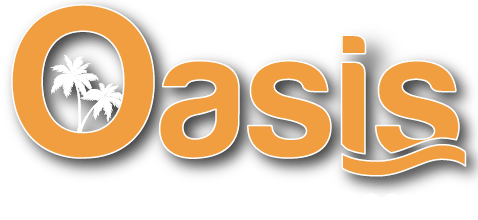Essential Water Heater Maintenance for Chicago Homes
Water heaters work tirelessly behind the scenes in your Chicago home, providing hot water for showers, dishes, and laundry throughout harsh winters and humid summers. Regular maintenance keeps these vital appliances running efficiently and extends their lifespan significantly. At Oasis Plumbing, Heating & Cooling, we understand the unique challenges that Chicago’s water quality and extreme temperature fluctuations place on water heating systems.
The mineral content in Chicago’s water supply, combined with the constant cycling between heating and cooling, creates perfect conditions for sediment buildup and component wear. Without proper maintenance, your water heater efficiency drops while energy bills climb. We’ve seen firsthand how preventive care saves homeowners thousands of dollars in premature replacement costs and emergency repairs.
Understanding Your Water Heater’s Components
Traditional tank water heaters contain several critical components that require regular inspection and maintenance. The anode rod, often called the sacrificial rod, attracts corrosive elements in the water to protect the tank walls from rust. This magnesium or aluminum rod gradually dissolves over time, typically needing replacement every three to five years depending on water conditions.
The temperature and pressure relief valve serves as your water heater’s primary safety mechanism. This valve releases excess pressure that builds up when water expands during heating. Testing this valve quarterly ensures it functions properly when needed. The dip tube directs cold water to the bottom of the tank for efficient heating, while the heating elements or gas burner assembly provide the actual heat source. Each component plays a crucial role in safe, efficient operation.
Signs Your Water Heater Needs Professional Attention
Recognizing early warning signs prevents minor issues from becoming major failures. Unusual noises like popping, crackling, or rumbling sounds indicate sediment accumulation at the tank bottom. This sediment layer forces the heating element to work harder, increasing energy consumption and accelerating wear. Rusty or discolored water suggests internal corrosion, while lukewarm water points to failing heating elements or thermostat problems.
Temperature fluctuations during use often signal sediment buildup or a failing dip tube. Water pooling around the base indicates tank failure or loose connections requiring immediate attention. Higher energy bills without increased usage typically mean your water heater works overtime due to efficiency loss. Our experienced technicians identify these issues during routine maintenance visits, addressing problems before they escalate into emergencies.
Professional Maintenance Services We Provide
Our comprehensive water heater maintenance service begins with a thorough system inspection. We examine all accessible components, checking for signs of wear, corrosion, or damage. Tank flushing removes accumulated sediment that reduces heating efficiency and causes premature tank failure. This process involves draining the tank completely and flushing with fresh water until the discharge runs clear.
We test and adjust the temperature and pressure relief valve, ensuring proper operation for safety. The anode rod inspection determines remaining life expectancy and replacement needs. Our technicians verify proper thermostat calibration, typically maintaining settings between 120-140 degrees Fahrenheit for optimal efficiency and safety. We inspect gas connections and venting systems on gas units, while electric models receive heating element testing and electrical connection verification.
DIY Maintenance Tasks Between Professional Services
Homeowners can perform several simple maintenance tasks to extend water heater life between our professional service visits. Monthly visual inspections help catch leaks early. Look for moisture, rust stains, or mineral deposits around connections and the tank base. Testing the temperature and pressure relief valve quarterly takes just minutes but provides crucial safety assurance.
- Check the temperature setting: Verify your thermostat remains at the recommended 120-degree setting for energy efficiency and scald prevention
- Clear the area around your water heater: Maintain at least two feet of clearance for proper ventilation and service access
- Monitor your water quality: Note any changes in water color, temperature consistency, or unusual odors that might indicate developing problems
Chicago-Specific Water Heater Challenges
Chicago’s water supply presents unique challenges for water heater longevity. The city’s water hardness levels fluctuate seasonally, with higher mineral content during certain periods accelerating sediment accumulation. Winter’s extreme cold increases demand on water heaters as incoming water temperatures drop significantly, forcing units to work harder maintaining desired temperatures.
The dramatic temperature swings between seasons cause expansion and contraction cycles that stress tank components and connections. Older Chicago homes often have outdated plumbing that compounds water heater strain. Serving our customers in Chicago and the Northern Suburbs for over 20 years, we’ve developed maintenance strategies specifically addressing these local challenges. Our technicians understand how Chicago’s unique conditions affect different water heater brands and models.
Benefits of Regular Professional Maintenance
Professional maintenance delivers measurable benefits beyond simple peace of mind. Energy efficiency improvements of 10-15% commonly result from regular service, translating to significant utility bill savings. Properly maintained water heaters last substantially longer than neglected units, with tank models reaching 12-15 years versus the typical 8-10 years without maintenance.
Safety improvements rank equally important, as maintenance prevents dangerous pressure buildup and gas leaks. Consistent hot water delivery enhances daily comfort while reducing emergency repair likelihood. Since 1997, Oasis Plumbing, Heating & Cooling & Cooling has delivered quality customer service, reliability, and expertise in heating, cooling, and ventilation to our residential and commercial clients. Our maintenance programs include priority emergency service, ensuring rapid response when unexpected issues arise.
Choosing the Right Maintenance Schedule
Maintenance frequency depends on several factors including water heater age, usage patterns, and local water conditions. Newer units typically require annual service, while older models benefit from bi-annual inspections. High-usage households or those with particularly hard water should consider quarterly professional inspections to prevent rapid sediment accumulation.
Our highly-trained technicians, and responsive support staff, offer customized solutions to fit your budget. We develop maintenance schedules tailored to your specific situation, considering factors like household size, water quality test results, and equipment age. This personalized approach maximizes equipment life while minimizing long-term costs through strategic preventive care.
Investment Protection Through Preventive Care
Water heater replacement represents a significant home investment, with modern high-efficiency units costing several thousand dollars installed. Regular maintenance protects this investment while preventing water damage from catastrophic tank failures. Emergency water heater replacement often costs substantially more than planned replacement, especially during Chicago’s harsh winter months when demand peaks.
Professional maintenance documentation also supports warranty claims when needed. Many manufacturers require proof of regular professional service to honor warranty coverage. Our detailed service records provide this documentation while tracking your water heater’s condition over time. This historical data helps predict replacement timing, allowing budgeting for this major expense rather than facing emergency replacement costs.










